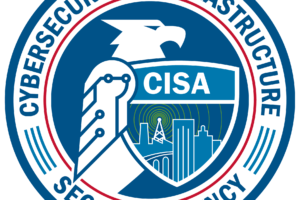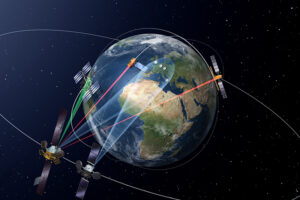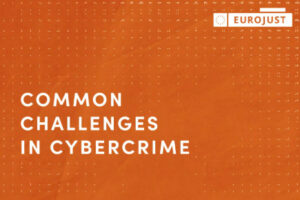Primary Mitigations to Reduce Cyber Threats to Operational Technology


Industry News







CISA—in partnership with the National Security Agency (NSA), Federal Bureau of Investigation (FBI), Australian Signals Directorate’s Australian Cyber Security Centre (ASD’s ACSC), Canadian Centre for Cyber Security (CCCS), and New Zealand’s National Cyber Security Centre (NCSC-NZ)—released joint Cybersecurity Advisory Fast Flux: A National Security Threat (PDF, 841 KB). This advisory warns organizations, internet service providers (ISPs), and cybersecurity service providers of the ongoing threat of fast flux enabled malicious activities and provides guidance on detection and mitigations to safeguard critical infrastructure and national security.
“Fast flux” is a technique used to obfuscate the locations of malicious servers through rapidly changing Domain Name System (DNS) records associated with a single domain name. This threat exploits a gap commonly found in network defenses, making the tracking and blocking of malicious fast flux activities difficult.
The authoring agencies strongly recommend adopting a multi-layered approach to detection and mitigation to reduce risk of compromise by fast flux-enabled threats. Service providers, especially Protective DNS providers (PDNS), should track, share information about, and block fast flux as part of their provided cybersecurity services. Government and critical infrastructure organizations should close this ongoing gap in network defenses by using cybersecurity and PDNS services that block malicious fast flux activity.

MS-ISAC recently released a new report titled “Strengthening Critical Infrastructure,” highlighting the growing cyber threats to critical infrastructure and the essential role of information sharing between state and local government organisations in national security. The report brings awareness to a surge of attacks by nation-state-affiliated and other criminal groups targeting state, local, tribal, and territorial (SLTT) installations that often contribute to undermining public trust.
The unrelenting attacks facing U.S. critical infrastructure, when successful, have significant and costly direct impacts on government services and undermine American’s confidence in the nation’s ability to defend itself. Critical infrastructure underpins nearly all aspects of society and the threats that critical infrastructure faces require a national-level response. MS-ISAC draws awareness to the critical role that SLTT and information sharing organisations play in providing this response in the report:
“Information Sharing and Analysis Centers (ISACs) provide significant support to many SLTT organisations. For instance, ISACs like WaterISAC and the Electricity ISAC support SLTT organisations in those SLTT sub-sectors as part of the broader water and electricity critical infrastructure sectors, respectively.”
MS-ISAC’s report is very helpful in understanding the relationship between SLTT and information sharing organisations and how these relationships provide a critical service to the various sectors they oversee. In other words, information sharing is critical for the organisations that make up the critical services American citizens rely on.

By Aurora García, a journalist and consultant specializing in security and cybersecurity.

The International Telecommunication Union (ITU) and the European Space Agency (ESA) have announced a collaborative effort to improve mitigation measures against harmful interference in satellite systems.
The joint initiative, reflecting United Nations objectives under the 2030 Agenda for Sustainable Development, aims to ensure the sustainable and efficient use of limited space-based communication resources.
Both organisations recognise growing complexities in managing finite spectrum and orbital resources. An agreement signed in Barcelona, Spain, formalises their plans for closer cooperation on key issues for global digital communications.
Under the agreement, ITU and ESA will work together on:
Space-based communication technologies are increasingly crucial for global connectivity, scientific research, and emergency response systems. At the same time, growing numbers of satellites and increasing risks of signal interference necessitate innovative, increasingly complex, and highly coordinated spectrum management solutions.
“Innovation and regulations are key to facilitate and preserve access to spectrum-orbit resources free from harmful interference,” said Mario Maniewicz, Director of ITU Radiocommunications Bureau. “This agreement is the first step towards a series of joint ESA-ITU efforts to ensure sustainability of space radio-communications systems.”
Preserving radio waves for all
ITU, as the UN specialised agency for information and communication technologies, has long been at the forefront of coordination among countries and regions on radio frequencies and satellite orbits worldwide. ITU Resolution 189 (Rev. Bucharest, 2022) emphasises the importance of transparency and confidence-building in outer space activities.
ESA, an intergovernmental organisation established in 1975, supports space research and technology development for peaceful and scientific purposes. Together, ITU and ESA aim to strengthen international efforts in satellite monitoring and interference mitigation, ensuring reliable and sustainable access to satellite communication services worldwide.
“Promoting the responsible use of spectrum and preserving it from interferences is key to ensure the viability of our operators and ultimately the service delivered to their customers,” said Laurent Jaffart, ESA’s Director of Connectivity and Secure Communications. “Together with ITU, we will promote the importance of ensuring the sustainability of this limited and valuable resource and will collaborate towards establishing good practices for its responsible use for the benefit of society and businesses.”
A step towards a sustainable digital future
By combining their expertise and resources, ITU and ESA could set a precedent for enhanced cooperation in the field of satellite communications.
“The shared commitment to responsible spectrum management and technological innovation marks a significant step toward a sustainable digital future for everyone,” said Mr Maniewicz. “This initiative underscores the importance of international collaboration in addressing the challenges and opportunities presented by space technologies.”
Maniewicz and Jaffart signed for their respective organisations at the Mobile World Congress (MWC2025 Barcelona).
As the demand for satellite-based services continues to grow, partnerships like this will help maintain the integrity and accessibility of global communication networks.
ITU and ESA have reaffirmed their dedication to a future where space technologies contribute positively to societal progress and sustainable development.